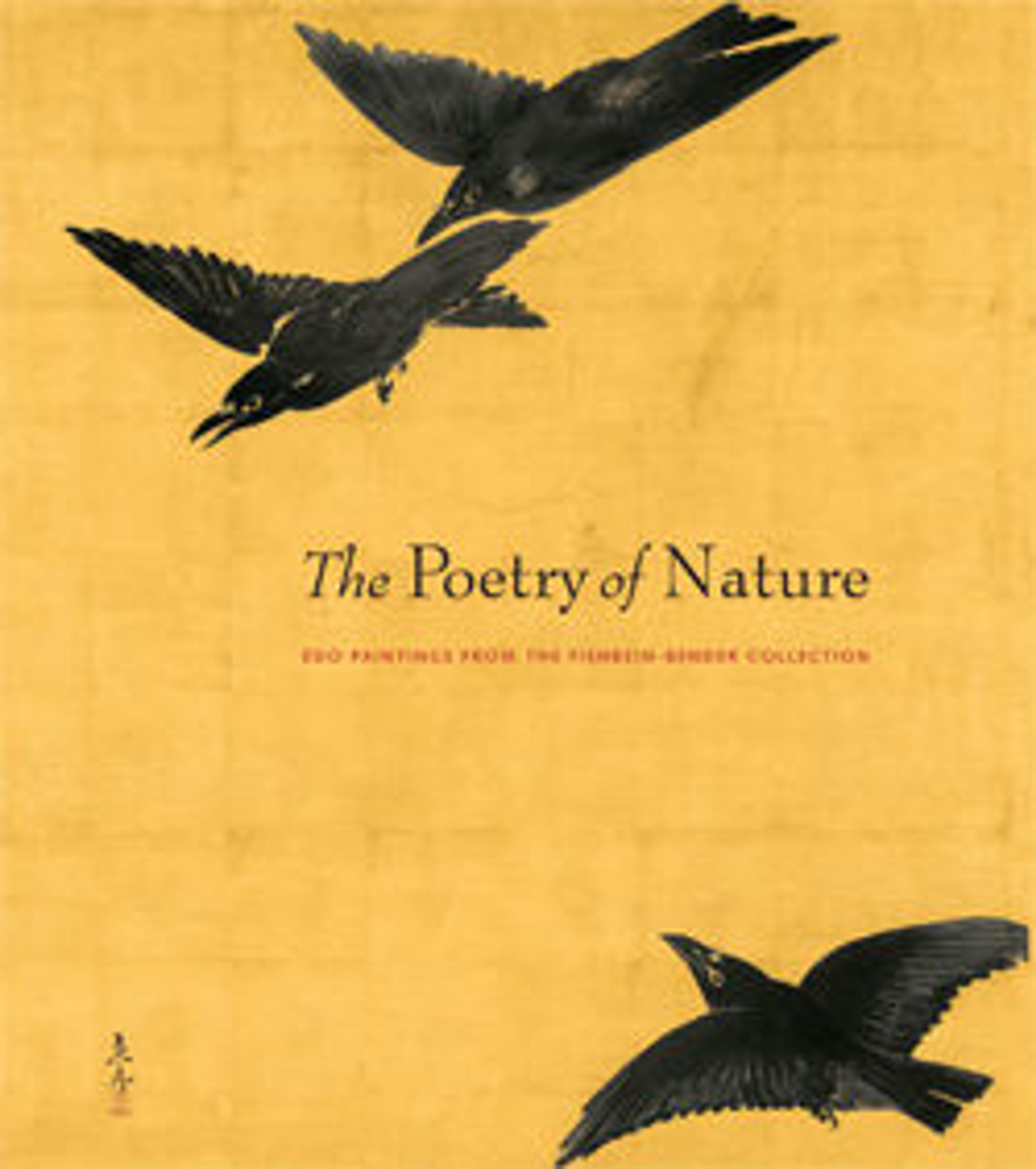On a Rustic Bridge, Carrying a Zither
An elderly man with a servant carrying a zither (Chinese: qin; Japanese: koto) on his back traverses a bridge toward an awaiting acquaintance. Characteristic of Uragami Gyokudō’s later works, from his sixties and early seventies, the painting at first glance seems uncontrolled; short twigs explode from trees like firecrackers and dry willow leaves burst forth in scratchy lines. On closer inspection, however, this work reveals a careful structure: the mountains, hills, and rocks roughly laid out in light washes of ink, which are animated by darker strokes applied in clear, rhythmic movements that impart life and vitality to the forms.
Gyokudō was a retainer for the Ikeda daimyo clan in Okayama in his early career. At age forty-nine he retired to pursue the life of a literatus, focusing on performing and composing for the seven-stringed zither (shichigenkin) as well as painting expressive ink landscapes.
Gyokudō was a retainer for the Ikeda daimyo clan in Okayama in his early career. At age forty-nine he retired to pursue the life of a literatus, focusing on performing and composing for the seven-stringed zither (shichigenkin) as well as painting expressive ink landscapes.
Artwork Details
- Title:On a Rustic Bridge, Carrying a Zither
- Artist:Urakami (Uragami) Gyokudō 浦上玉堂 (Japanese, 1745–1820)
- Period:Edo period (1615–1868)
- Date:1814
- Culture:Japan
- Medium:Hanging scroll; ink on paper
- Dimensions:Image: 50 1/4 × 21 5/16 in. (127.7 × 54.2 cm)
Overall with mounting: 73 1/4 × 27 7/16 in. (186 × 69.7 cm)
Overall with knobs: 73 1/4 × 32 5/16 in. (186 × 82 cm) - Classification:Paintings
- Credit Line:Mary Griggs Burke Collection, Gift of the Mary and Jackson Burke Foundation, 2015
- Object Number:2015.300.177
- Curatorial Department: Asian Art
More Artwork
Research Resources
The Met provides unparalleled resources for research and welcomes an international community of students and scholars. The Met's Open Access API is where creators and researchers can connect to the The Met collection. Open Access data and public domain images are available for unrestricted commercial and noncommercial use without permission or fee.
To request images under copyright and other restrictions, please use this Image Request form.
Feedback
We continue to research and examine historical and cultural context for objects in The Met collection. If you have comments or questions about this object record, please contact us using the form below. The Museum looks forward to receiving your comments.
